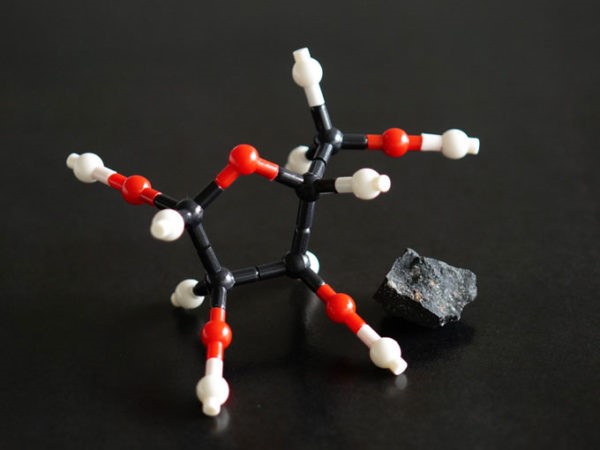
A crucial step in the emergence of life on Earth was the synthesis of larger organic molecules from basic chemical building blocks such as ammonia, carbon dioxide, water, and methanol. The presence of amino acids and other complex organics in comets and meteorites demonstrates that widespread organic synthesis likely occurred across the early solar system. Sugars, such as ribose, are a class of essential molecules that are precursors to important biochemicals such as ribonucleic acid (RNA) and other complex carbohydrates required for genetic expression and metabolic activity. A study led by Yoshihiro Furukawa from Tohoku University in Japan found ribose and several other bioessential sugars in three carbonaceous chondrite meteorites. The likely pathway of synthesis was through a formose-like reaction, a process in which simple sugars are formed from the condensation of formaldehyde. Through analysis of the mineralogical textures of the meteorites, it was found that the extraterrestrial sugars formed both before and after the accretion of their parent asteroids. This finding suggests that synthesis of sugars, such as ribose, via natural geological processes was possible in places in the early solar system other than Earth. Meteorites may have carried extraterrestrial sugars to early Earth and, thus, may have contributed to the formation of RNA on Earth. READ MORE